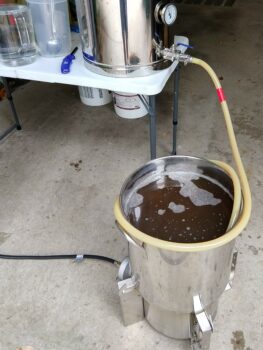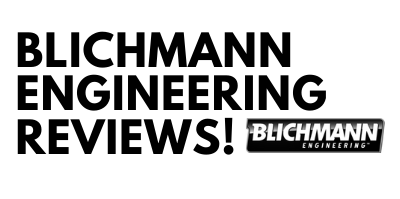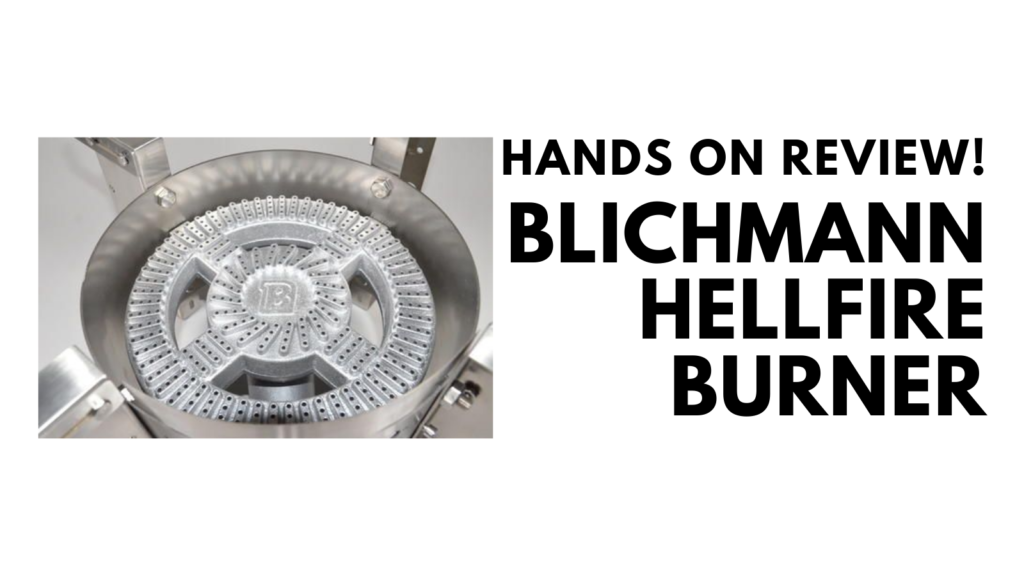
Hands on Review: Blichmann Engineering Hellfire Burner!
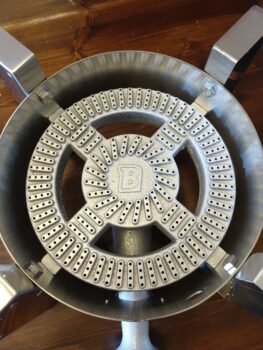 This review is by Homebrew Finds Contributor Brad Probert. Brad is an engineer, expert homebrewer and experienced reviewer. Grab a link to Brad’s website at the end of this review.
This review is by Homebrew Finds Contributor Brad Probert. Brad is an engineer, expert homebrewer and experienced reviewer. Grab a link to Brad’s website at the end of this review.
Blichmann Engineering Hellfire Burner
These days I brew inside on an electric system, for the convenience of indoor brewing and the repeatability of electric temperature control. However, I still find occasion to brew outdoors from time to time. And although it’s possible to brew with electricity outdoors, brewing with propane allows more freedom in choosing your brew spot. And most outdoor electrical options are 110V, which can’t keep up with propane when trying to heat things up quickly
Compare Models, Prices and Availability, Review Continues Below:
- Blichmann Engineering HellFire Burner at MoreBeer
- Blichmann Engineering HellFire Burner at Adventures in Homebrewing
- Blichmann Engineering HellFire Burner at Austin Homebrew Supply
- Blichmann Engineering HellFire Burner at Great Fermentations
- Hell Fire Floor Burner – affiliate link, note that multiple variations of this product may be available, as such a different version may appear at this link
- Larger Version: BLICHMANN HELLFIRE 1BBL XL Version Floor Burner 140,000 BTU Latest Model for up to 25″ Brew Kettle – affiliate link, note that multiple variations of this product may be available, as such a different version may appear at this link
This article contains affiliate links. We may make a small percentage if you use our links to make a purchase. You won’t pay more and you’ll be supporting Homebrew Finds and more content like this. Thank you for your support!
Blichmann designed the Hellfire burner to be able to operate in a lower power mode that’s more efficient in its use of propane, and also a maximum power output mode. High Efficiency Mode runs at 80,000 BTU/hr, and Hellfire Mode runs at 140,000 BTU/hr. That means in Efficiency Mode, you burn about 4 lbs of propane/hour, while in Hellfire Mode, you go through about 7 lbs/hr. Blichmann has some data on their website from their tests comparing different propane burners on the market. I don’t know the detailed conditions of that testing, but they do point out that there is perhaps more to it than just the manufacturer’s advertised rating. Their testing on their own Hellfire Burner overachieved their advertised rating, coming in at 147,000 BTU/hr on the full power mode.
 Burner with its 368 Nozzles
Burner with its 368 Nozzles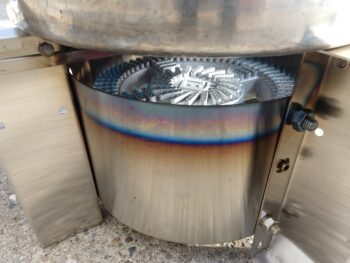 Burner Running in Efficiency Mode
Burner Running in Efficiency Mode
The large cast iron burner looks like a wheel. It has a circular ring around the outside, a hub in the middle, and 4 spokes connecting the two. There are 368 individual nozzles set within the body of the burner. And like most of these burners, it has an adjustable damper to control the amount of air coming into the burner to adjust the oxygen to propane ratio for optimal flame. The burner is surrounded by a heavy-gauge stainless steel ring to shield the burner from cross-winds. The same heavy gauge stainless is used for the legs attached to the ring. On top of the ring sit four adjustable retaining tabs. Their triangular wedge shape is designed to support your pot and prevent you from accidentally setting it down off-centered and causing your kettle to tip over. These adjust to accommodate kettles up to 19.75” in diameter. This accommodates up to Blichmann’s 30 gallon kettle, and Blichmann says the Hellfire can maintain a rolling boil on 20 gallon batch of beer.
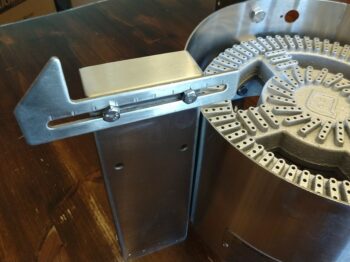 Adjustable Pot Keeper Tab
Adjustable Pot Keeper Tab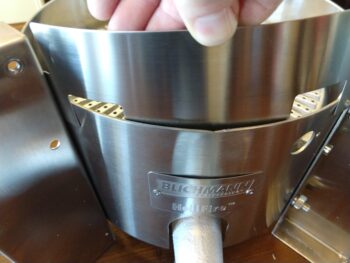 Heat Shield Slid into Place
Heat Shield Slid into Place
Aside from the burner unit and the regulator/hose, there’s a smallish curved stainless steel piece that works as a heat shield. It slides in along the edge of the burner, shielding approximately 1/4 of the circumference. With the curved shape, it nests into the structure of the base and effectively closes off the heat path up that side of your kettle, to protect your valve and/or thermometer. It seems like such a simple piece, but provides a great function. Blichmann thought it was pretty slick too, and they have a patent pending on it.
Hands on Review
Opening the box, this burner was simply impressive. It was silver, shiny, and appeared to be built like a tank. Lifting it out of the box, it was hefty and solid (just over 25 pounds). The legs, made out of boxed sections of thick stainless were simple, but provided very wide and secure footing for the burner. This of course is an important safety feature of a burner, to keep your kettle full of boiling liquid stable. And after using this Hellfire burner, I realized my previous burners were woefully inadequate on this aspect. Other burners seem to have legs designed with simply the function of “keeping the burner from touching the floor”. Blichmann clearly recognized that an important additional function was to “provide stability for a kettle full of hot wort”.
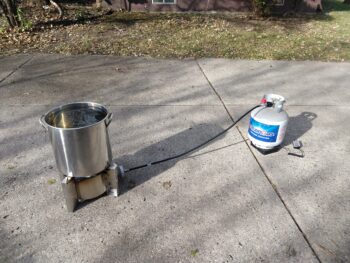 Setup for 8 Gallon Water Heating Test
Setup for 8 Gallon Water Heating Test
While evaluating this burner, I was reminded that the benefit of outdoor brewing has sort of inverse relationship to the benefit of indoor electric brewing- the ability to multi-task. Specifically, with outdoor brewing over a live flame, you can’t really multi-task. So you’re forced to just sit down and chill. I ran some tests to measure the speed of heating. I’m sure there are all kinds of relevant details about the test conditions, so here’s what I’ve got. I was outside on a 52F Michigan late fall day. The propane tank I was using was at 22 lbs, so about 5 lbs of propane in the 20 lb capacity tank. By the end of my test it was down to 2.5 lbs of propane left and the flame was noticeably weaker than when I started. This obviously contributed to my slowing water heat rate. Blichmann’s website gives some data on how to calculate your BTU, so from my propane tests, I was able to tell I was running at about 100,000 BTU/hr.
 8 Gallon Kettle Sitting in Keeper Tabs
8 Gallon Kettle Sitting in Keeper Tabs
I filled the kettle with 8 gallons of water, which started out at 57F. I cranked up the pressure regulator to max open, and opened up the burner throttle plate to also full open. It took just over 40 minutes to get to 174F. I had to stop before I got to full boil because as I mentioned, the tank started getting low and the flames started to be noticeably lower. Nobody likes to run out of propane on a brew day, but another reason to run with a full tank is you get better propane flow and faster heating times.
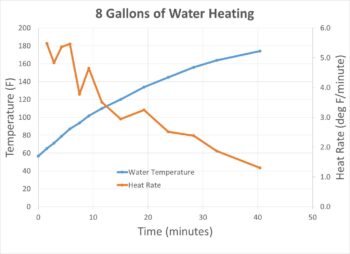 Water Heating Data Over Time
Water Heating Data Over Time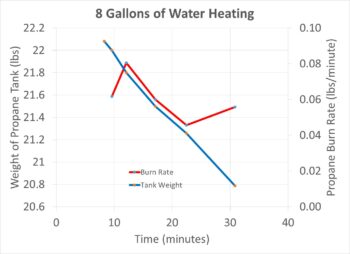 Propane Burn Rate on Water Test
Propane Burn Rate on Water Test
During my test, I got the stainless steel ring of the body heated up to turn multiple color shades, but a benefit of the stainless is you don’t have to tolerate burning paint fumes. I’ve had to endure this on other burners I’ve used in the past, as well as worry about airborne flakes of paint near my brew kettle.
Conclusions
Overall, the Hellfire burner worked as great as it looked. The stainless steel body has a benefit over the typical bent & painted metal frames both in its ability to provide a solid base for your kettle, and the elimination of burning paint. Having the high output capability to speed up heating times is great, and it’s also good that it was designed to operate at a lower heat rate as well. So even as an electric brewer, this is a solid tool to have available for outdoor brewing occasions.
Compare Models, Prices and Availability, Review Continues Below:
- Blichmann Engineering HellFire Burner at MoreBeer
- Blichmann Engineering HellFire Burner at Adventures in Homebrewing
- Blichmann Engineering HellFire Burner at Austin Homebrew Supply
- Blichmann Engineering HellFire Burner at Great Fermentations
- Hell Fire Floor Burner – affiliate link, note that multiple variations of this product may be available, as such a different version may appear at this link
- Larger Version: BLICHMANN HELLFIRE 1BBL XL Version Floor Burner 140,000 BTU Latest Model for up to 25″ Brew Kettle – affiliate link, note that multiple variations of this product may be available, as such a different version may appear at this link
More Photos
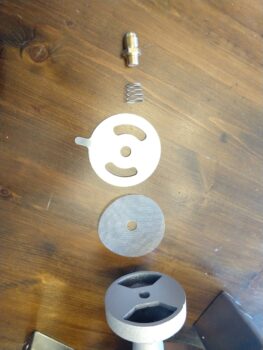 Air Damper Parts
Air Damper Parts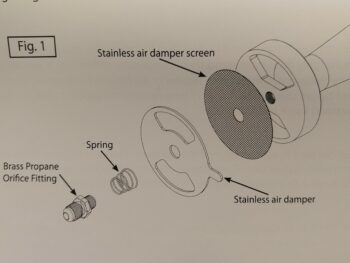 Layout of Damper
Layout of Damper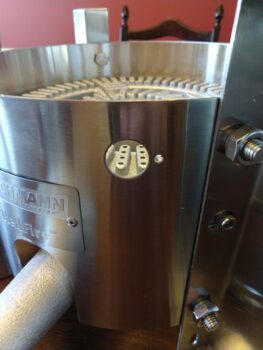 Access Hole for Lighting Burner
Access Hole for Lighting Burner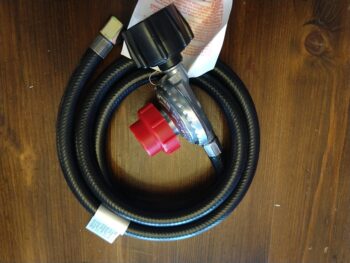 Included 10 Psi Regulator and Hose
Included 10 Psi Regulator and Hose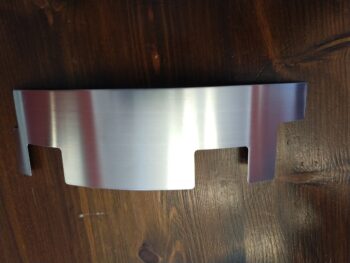 Patent Pending Heat Shield
Patent Pending Heat Shield Stainless Steel Changes Colors, But no Paint to Burn
Stainless Steel Changes Colors, But no Paint to Burn
More Blichmann Engineering Reviews!
More Homebrew Finds!
- Last 50 Finds!
- Top Deals – a curated list of the best deals
- Homebrew Reviews – one of the largest libraries of homebrew reviews in existence!
- Our Top Posts – tips, how-tos, resources posts and more
- Let’s be Friends!
Recent Deals!
10 Most Recent Homebrew Resource Posts & How-To’s!
We are Homebrew Review HQ! Our 10 Most Recent Reviews
This post may contain affiliate links. We may make a commission when you use our links. This will never cost you extra. Thank you for supporting Homebrew Finds!
Special Thanks to Blichmann Engineering for providing the unit used for evaluation in this review.
By Brad Probert. Check out Brad’s website – beersnobby.com
Make sure the components you use are compatible and rated for your intended application. Contact manufacturer with questions about suitability or a specific application. Always read and follow manufacturer directions.
Price, promotions and availability can change quickly. Check the product page for current price, description and availability. tag:lnksfxd review:blichfb tag:tpr












